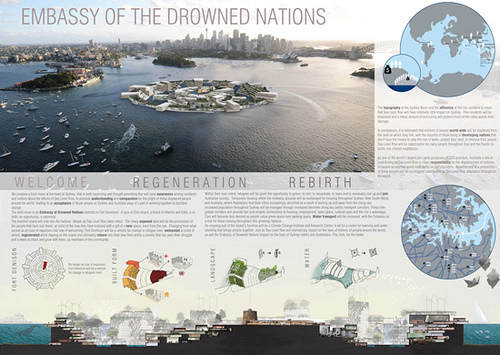 [Image: Muscovites forced to masks against smoke from the burning forests and peat bogs of a drought-stricken Russia; photo by Alexander Demianchuk/Reuters].
[Image: Muscovites forced to masks against smoke from the burning forests and peat bogs of a drought-stricken Russia; photo by Alexander Demianchuk/Reuters].
I’ll be on the road for the next week or more, driving west, reading The Dead Hand on our long-delayed move back to Los Angeles, so things will be a bit quiet here. In the absence of regular posts, however, some links worth checking out include Pruned‘s proposal for a “conflict zoo,” or a wildlife arena “that only exhibits animals affected by man-made disasters.”
Instead of showcasing the planet’s marvelous natural beauty and ecological diversity, it collects living artifacts from sites of disturbances, where culture messily intersects with the wilderness… In addition to refugees from the Gulf Coast oil spill, it would also house samples of local fauna affected by other large oil spills, including the one in Dalian, China, koalas saved from bushfires, elephants displaced by civil wars, gorillas smuggled out during outbreaks of genocide, and tropical birds caught in the crossfires between loggers, indigenous tribes and the Landless Workers’ Movement.
While you’re there, Pruned‘s idea for animals repurposing themselves as a kind of living GPS system is pretty amazing, and the Embassy of the Drowned Nations, also featured on that blog, is worth a gander.
 [Image: The Embassy of the Drowned Nations by OCULUS].
[Image: The Embassy of the Drowned Nations by OCULUS].
The opening image of this post, meanwhile, comes from the ongoing fires in Russia, where 30% of the nation’s grain has been destroyed. These drought-induced fires, however, might soon get a lot more frightening:
As if things in Russia were not looking sufficiently apocalyptic already, with 100-degree temperatures and noxious fumes rolling in from burning peat bogs and forests, there is growing alarm here that fires in regions coated with fallout from the Chernobyl nuclear disaster 24 years ago could now be emitting plumes of radioactive smoke.
But were these fires predicted? Are they simply the expected outcome of an already long-thawing landscape—part of what has been described as the “methane time bomb” hiding in the soils and seabeds of the Arctic region? As such, the “coils of pungent smoke [that] threaded into apartment buildings, offices and metro stations” in Moscow—a city where 700 people are now dying everyday—might be a more regular occurrence in the years to come.
Speaking of grain harvests being interrupted and destroyed, NPR recently interviewed Evan Fraser—who was an electrifying speaker at Foodprint Toronto last week—about “how food empires fail and if America [sic] is next.” One of Fraser’s explicit references is a failure of the grain harvest in Russia.
In any case, some other headlines to read (though many continue this unexpectedly apocalyptic tone): Google is buying unmanned aerial drones, because they’re “brilliant for mapping entire neighbourhoods”; a 53,000-year old “Neanderthal bedroom” has been discovered in a cave in Spain; Dubai is plagued with “deserted highways, empty hotel rooms, [and] miles of unsold residential and office space,” but don’t tell that to the city’s boosters, who disappointingly rely on taking quotations out of context to get their point across; just as we read that a globally vital seed bank, where “more than 90% of the plants are found in no other research collection or seed bank,” is on the verge of being destroyed by property developers, we also read that genetically modified crops have escaped into the wild in the U.S., where they threaten to become herbicide-resistant “super-weeds” (like something out of the fiction of John Wyndham); and, amidst all this, Elon Musk, a “brilliant entrepreneur who made a fortune from the internet and has invested vast amounts of it in building his own private space rocket company,” is “planning to retire to Mars.”
Perhaps, once he’s there, he could find a use for robots that “swim through sand like a fish through water,” transforming that desert planet into an unlikely ocean.
